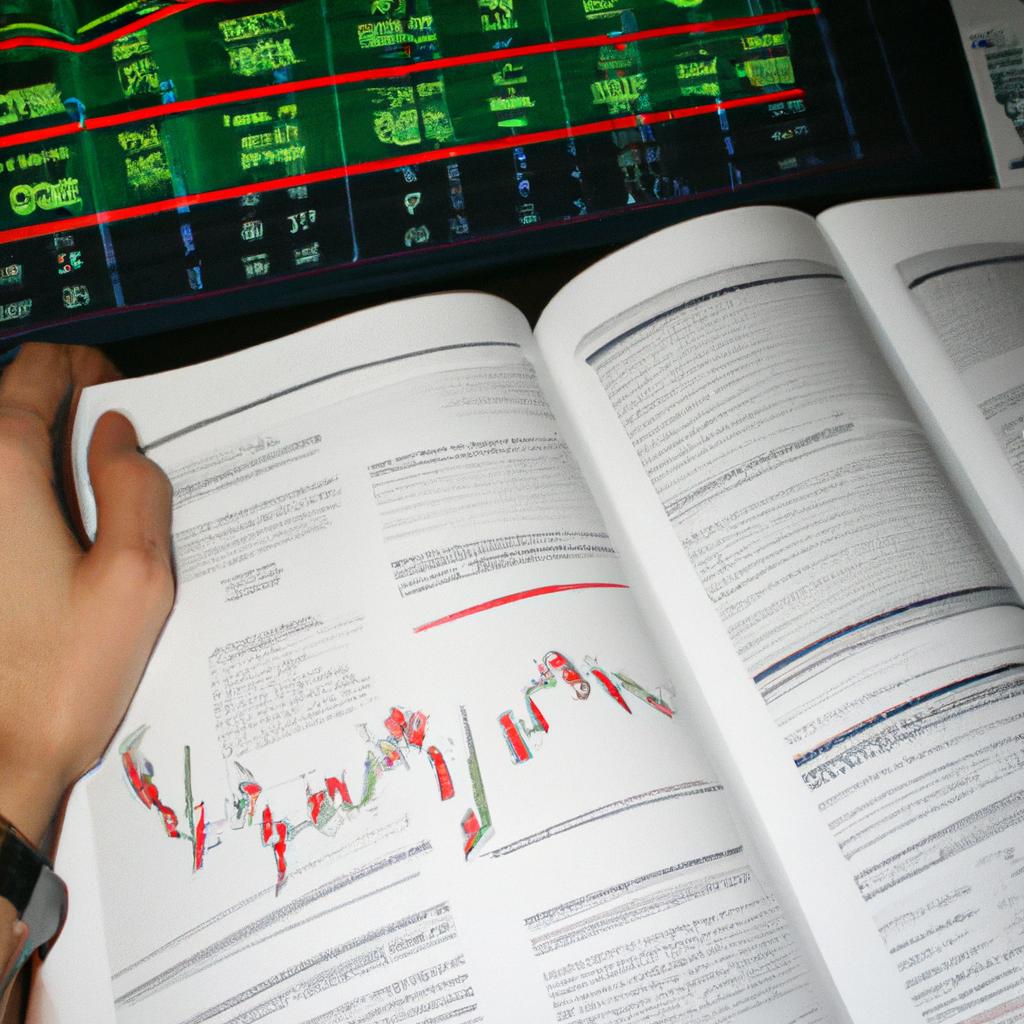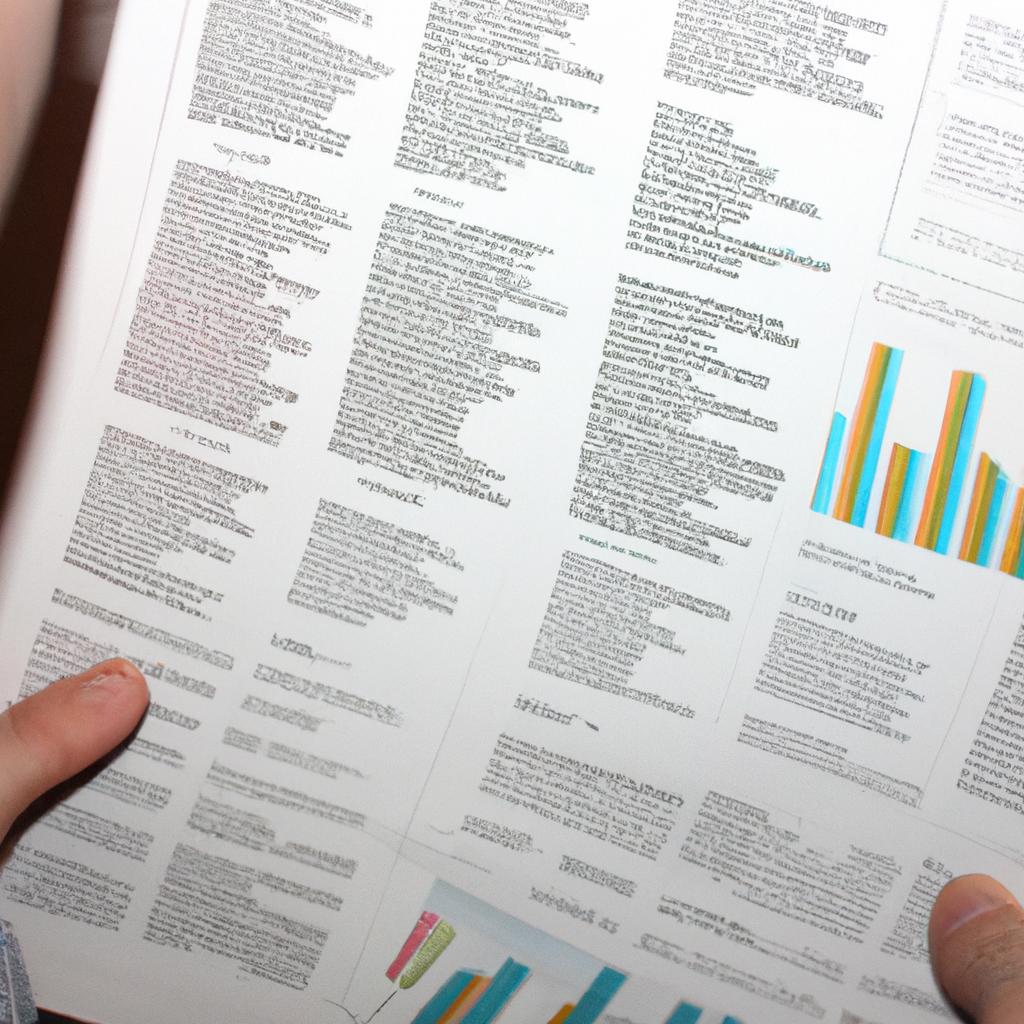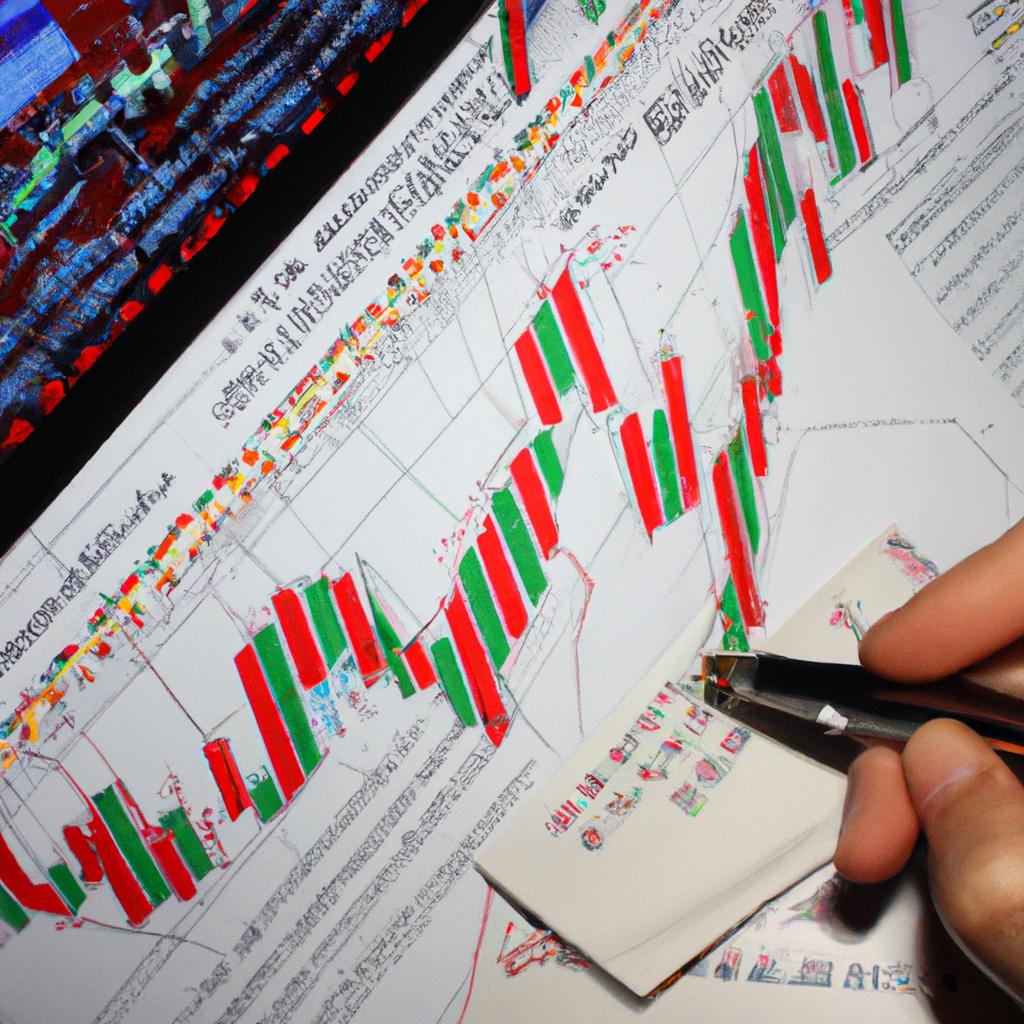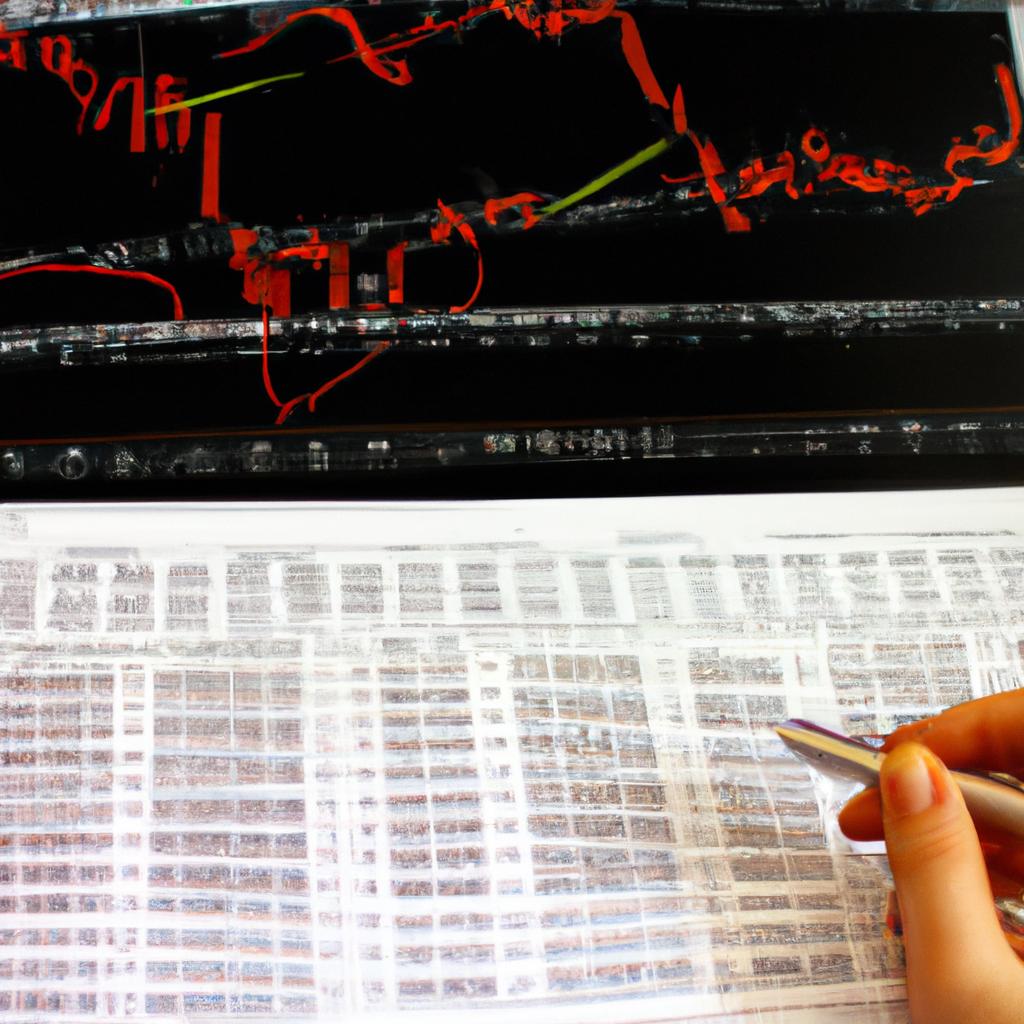Commodity Trading Strategies: Investing Business > Commodities Insights

In the world of finance, commodity trading strategies play a crucial role in guiding investors through the complex and ever-changing landscape of commodities markets. These strategies are designed to optimize profits by capitalizing on price fluctuations in various raw materials such as gold, oil, agricultural products, and more. To illustrate the significance of these strategies, let us consider a hypothetical scenario: imagine an investor who is interested in profiting from the volatility of crude oil prices. By employing a well-crafted commodity trading strategy, this investor could potentially navigate the uncertainties surrounding global oil production and demand to maximize their returns.
Commodity trading strategies encompass a wide range of approaches that enable market participants to make informed decisions regarding buying or selling commodities contracts. The success of these strategies lies in their ability to analyze historical data, monitor current market trends, and forecast future price movements accurately. Consequently, practitioners must employ sophisticated quantitative models and advanced technical analysis techniques to gain insights into supply and demand dynamics across different industries. Additionally, they need to stay abreast of geopolitical events, weather patterns, government policies, and other factors that can significantly impact commodity prices. Such comprehensive analyses allow traders to identify opportunities for arbitrage or speculative positions with relatively high probabilities of favorable outcomes.
By exploring various aspects related to commodity trading such as supply and demand dynamics, global macroeconomic factors, and geopolitical events, traders can develop effective trading strategies. For example, a common strategy is trend following, which involves analyzing price charts to identify long-term trends in commodity prices and entering positions in the direction of the trend.
Another popular strategy is mean reversion, where traders take advantage of temporary price deviations from their long-term averages. They identify commodities that have experienced significant price movements beyond what may be considered normal and take positions expecting prices to revert back to their mean.
Spread trading is another approach that involves taking opposing positions in related commodities or different delivery months of the same commodity. Traders analyze historical relationships between these commodities or delivery months and look for discrepancies that may offer opportunities for profit.
Seasonal trading strategies focus on seasonal patterns in commodity prices. For example, agricultural commodities tend to have distinct seasonal cycles due to planting, growing, harvesting, and consumption patterns. Traders utilize historical data to capitalize on these predictable patterns by buying or selling at certain times of the year.
Additionally, some traders employ fundamental analysis techniques to evaluate the underlying factors affecting commodity prices. This includes studying supply and demand fundamentals such as crop reports for agricultural commodities or inventory levels for energy commodities.
It’s important to note that no single strategy guarantees success in commodity trading. The choice of strategy depends on the trader’s risk tolerance, expertise, market conditions, and other individual factors. Moreover, risk management plays a crucial role in mitigating potential losses and protecting capital.
In conclusion, commodity trading strategies are essential tools used by investors to navigate the complexities of the commodities markets. By employing various approaches such as trend following, mean reversion, spread trading, seasonal trading, and fundamental analysis techniques, traders aim to optimize profits by capitalizing on price fluctuations in raw materials. However, it is crucial for traders to continually adapt their strategies based on changing market conditions and maintain disciplined risk management practices.
Different types of commodity trading strategies
Commodity trading involves the buying and selling of raw materials, such as gold, oil, or agricultural products. Traders utilize various strategies to navigate the volatility and complexity of this market. Understanding these different approaches is crucial for investors seeking to maximize their returns while managing risks effectively.
One example of a popular commodity trading strategy is trend following. This approach relies on identifying and capitalizing on price trends in the market. By analyzing historical data and patterns, traders can determine whether a particular commodity is trending upwards or downwards. They then enter trades in line with the direction of the trend, aiming to profit from its continuation. For instance, if there has been a consistent uptrend in oil prices due to increased global demand, a trend-following trader would likely go long on oil contracts.
- Fundamental analysis: This method involves evaluating supply-demand dynamics and economic factors that affect commodities’ prices.
- Spread trading: Traders simultaneously buy one contract while selling another related contract to exploit price differences between them.
- Seasonal patterns: Some commodities exhibit regular seasonal fluctuations influenced by factors like weather conditions or harvest cycles.
- Options trading: Utilizing options contracts allows traders to hedge against potential losses or speculate on future price movements without owning the underlying asset.
Additionally, here is an illustrative table displaying four key characteristics of different commodity trading strategies:
| Strategy | Description | Pros | Cons |
|---|---|---|---|
| Trend following | Identifying and capitalizing on price trends | Potential for high profits | Difficulty in accurately predicting trends |
| Fundamental analysis | Evaluating supply-demand dynamics | Provides insights into intrinsic value | Requires comprehensive research |
| Spread trading | Simultaneously buying one contract while selling another | Can generate consistent income | Requires precise timing and execution |
| Seasonal patterns | Exploiting regular seasonal fluctuations | Predictable price movements | Limited trading opportunities outside seasons |
In conclusion, understanding the different types of commodity trading strategies is essential for investors looking to succeed in this market. Whether it’s trend following, fundamental analysis, spread trading, or taking advantage of seasonal patterns, each strategy offers unique benefits and challenges. By diversifying their approach and adapting to changing market conditions, traders can increase their chances of achieving profitable outcomes.
Moving forward into the subsequent section about “Factors to consider when developing a commodity trading strategy,” it is important to assess various aspects that influence the effectiveness and suitability of these strategies.
Factors to consider when developing a commodity trading strategy
Different types of commodity trading strategies can be employed by investors to maximize their returns and manage risks in the commodities market. One such strategy is trend following, which involves identifying and capitalizing on trends in commodity prices. For example, let’s consider a hypothetical case where an investor notices that the price of crude oil has been steadily increasing over the past few months due to geopolitical tensions. By implementing a trend-following strategy, they decide to buy crude oil futures with the expectation that the upward trend will continue.
There are several factors to consider when developing a successful commodity trading strategy:
-
Fundamental analysis: This approach involves analyzing supply and demand dynamics, global economic indicators, weather patterns, and geopolitical events that may impact commodity prices. By understanding these fundamental drivers, investors can make informed decisions about buying or selling commodities based on expected changes in supply or demand.
-
Technical analysis: Utilizing historical price data and various technical indicators, traders can identify patterns and trends in commodity markets. These patterns help them predict future price movements and determine entry and exit points for trades. Technical analysis provides valuable insights into market sentiment and helps traders adjust their positions accordingly.
-
Risk management: Commodity trading inherently carries risks such as volatility, leverage, liquidity constraints, and regulatory changes. Implementing effective risk management techniques like diversification, stop-loss orders, position sizing, and hedging strategies can help mitigate potential losses and protect investment portfolios from adverse market conditions.
-
Market timing: Timing plays a crucial role in commodity trading success. Investors need to carefully analyze market cycles and understand seasonal patterns within specific commodities to optimize their entry or exit points effectively. Moreover, keeping track of economic data releases and news events allows traders to anticipate short-term fluctuations caused by unexpected developments.
In summary, different types of commodity trading strategies exist depending on an investor’s goals and risk tolerance levels. Combining fundamental analysis with technical analysis while incorporating robust risk management practices enhances the likelihood of profitable trades. Additionally, understanding market timing and being aware of external factors impacting commodity prices contribute to successful trading outcomes.
Transitioning into the subsequent section about “Technical analysis in commodity trading,” it is important to delve deeper into the specifics of this strategy for a comprehensive understanding of its applications and benefits.
Technical analysis in commodity trading
Factors to Consider when Developing a Commodity Trading Strategy
In the previous section, we discussed the key factors that traders need to consider when developing a commodity trading strategy. Now, let’s delve deeper into the role of technical analysis in commodity trading.
To illustrate the importance of technical analysis, let’s consider an example scenario: A trader wants to invest in crude oil futures and is looking for an optimal entry point. By employing technical analysis techniques such as chart patterns, trend lines, and indicators like moving averages or oscillators, the trader can analyze historical price data to identify potential trends and reversal points. This information helps them make informed decisions about when to enter or exit positions.
Technical analysis offers several advantages for commodity traders:
-
Timing trades: Technical analysis provides valuable insights into market timing by identifying patterns and signals that indicate potential price movements. Traders can use this information to maximize profits and minimize risk by entering or exiting positions at opportune moments.
-
Risk management: Through technical analysis, traders can set stop-loss levels and determine target prices based on support and resistance levels identified on charts. This enables effective risk management strategies by limiting losses and ensuring profitable exits from trades.
-
Market sentiment assessment: Technical indicators often incorporate volume data or other metrics reflecting market sentiment. By analyzing these indicators alongside price action, traders gain additional insight into market dynamics and investor behavior, helping them make more accurate predictions.
-
Decision-making efficiency: Technical analysis simplifies complex market data into visual representations such as charts or graphs, allowing traders to quickly interpret information and make well-informed decisions without getting overwhelmed by excessive details.
By incorporating technical analysis into their trading strategies, commodity investors increase their chances of making successful trades while effectively managing risks associated with volatile commodities markets.
Next Section: Fundamental Analysis for Commodity Trading
Fundamental analysis for commodity trading
Transitioning from the previous section focused on technical analysis, we now turn our attention to another essential approach in commodity trading: fundamental analysis. By examining various factors that influence supply and demand dynamics, traders can gain valuable insights into potential price movements. To illustrate the significance of fundamental analysis, let us consider a hypothetical case study involving crude oil.
Imagine an investor named Sarah who is interested in trading crude oil futures. She decides to utilize fundamental analysis to make informed trading decisions. Sarah begins by studying key economic indicators such as GDP growth rates, unemployment figures, and inflation rates of major oil-consuming countries. These metrics provide her with a broader understanding of global economic conditions and their potential impact on oil consumption.
Fundamental analysis encompasses several critical aspects that traders should consider when evaluating commodities:
-
Macroeconomic Factors:
- Geopolitical tensions
- Government policies
- Global events (e.g., natural disasters)
-
Supply-side Factors:
- Production levels
- Inventories
- OPEC decisions
-
Demand-side Factors:
- Economic growth prospects
- Consumption trends
- Weather patterns
To delve deeper into these factors, let us examine a table highlighting their importance in influencing price movements:
| Factor | Impact on Prices | Example |
|---|---|---|
| Geopolitical Tensions | Increase volatility | Political unrest disrupting oil production |
| Production Levels | Directly affects supply | Increased production resulting in surplus inventory |
| Economic Growth Prospects | Indirectly impacts demand | Strong economic growth leading to higher energy consumption |
| OPEC Decisions | Affects market sentiment | Decreased output quotas causing prices to rise |
By considering these aspects through fundamental analysis, traders like Sarah can enhance their decision-making process and potentially identify profitable opportunities within the commodities market. Understanding the interplay between supply and demand dynamics, along with macroeconomic factors, allows traders to make informed trading decisions.
As we have explored fundamental analysis as a crucial approach in commodity trading, it is evident that combining both technical and fundamental analyses can provide traders with a comprehensive understanding of market trends. In the subsequent section on risk management techniques for commodity traders, we will delve into strategies aimed at mitigating potential risks associated with these volatile markets.
Risk management techniques for commodity traders
Commodity Trading Strategies: Investing Business > Commodities Insights
Fundamental Analysis for Commodity Trading
In the previous section, we explored the importance of fundamental analysis in commodity trading. To further demonstrate its significance, let’s consider a hypothetical example involving crude oil prices. Suppose there is an ongoing conflict in a major oil-producing region that leads to supply disruptions. By conducting thorough research and analyzing various factors such as geopolitical tensions, production levels, and global demand, traders can assess the potential impact on crude oil prices.
When it comes to employing fundamental analysis in commodity trading strategies, several key considerations should be kept in mind:
- Economic Indicators: Examining economic indicators such as GDP growth rates, inflation data, and employment figures helps identify trends that may influence commodity markets.
- Supply and Demand Dynamics: Analyzing supply and demand patterns provides insights into market imbalances or changes in consumption patterns that could affect commodity prices.
- Weather Patterns: Monitoring weather forecasts plays a crucial role in commodities like agriculture products and natural gas since adverse weather conditions can significantly impact crop yields or energy demand.
- Government Policies: Keeping track of government policies related to taxation, subsidies, regulations, and trade agreements is essential as they can have substantial effects on specific commodities.
By incorporating these aspects into their decision-making process, traders can enhance their understanding of the underlying fundamentals driving commodity prices.
Risk Management Techniques for Commodity Traders
Effective risk management is vital for successful commodity trading. Traders must employ strategies to mitigate potential losses while maximizing profit opportunities. Here are four important risk management techniques commonly used by commodity traders:
- Diversification: Spreading investments across different commodities reduces exposure to any single market segment.
- Stop Loss Orders: Setting predetermined price thresholds allows traders to automatically exit positions if prices reach unfavorable levels.
- Hedging: Utilizing derivative instruments like futures contracts enables traders to offset potential losses through positions taken opposite to their primary trades.
- Risk Assessment: Continuously monitoring and evaluating market conditions helps identify potential risks and adjust trading strategies accordingly.
Implementing these risk management techniques allows traders to navigate the inherent uncertainties of commodity markets while safeguarding their invested capital. It is essential to develop a comprehensive risk management plan tailored to individual trading goals, risk tolerance, and market understanding.
In conclusion, fundamental analysis plays a crucial role in guiding commodity trading decisions by assessing factors that influence prices. Additionally, employing effective risk management techniques helps traders mitigate potential losses and protect their investments.
Long-term vs. short-term commodity trading strategies
Risk management techniques are crucial for commodity traders to minimize potential losses and protect their investments. However, it is equally important to consider the trading strategies employed, as they can significantly impact overall profitability. In this section, we will explore the differences between long-term and short-term commodity trading strategies.
One example of a long-term commodity trading strategy is trend following. Traders who adopt this approach aim to identify large market trends and ride them for an extended period. For instance, let’s consider a hypothetical case study involving a trader who recognizes an upward trend in the price of gold due to increased demand from emerging markets. This trader decides to buy gold futures contracts with a view to holding them for several months or even years until the trend reverses.
Now, let’s delve into some key characteristics that differentiate long-term and short-term commodity trading strategies:
- Time Horizon: Long-term strategies involve holding positions for extended periods ranging from several months to years, while short-term strategies focus on capitalizing on immediate market fluctuations within days or even minutes.
- Market Analysis: Long-term traders often rely on fundamental analysis, studying supply and demand factors, economic indicators, and geopolitical events affecting commodities’ value over time. On the other hand, short-term traders may prioritize technical analysis using charts, patterns, and statistical models.
- Risk Tolerance: Long-term strategies generally require higher risk tolerance as positions are held through market volatility over an extended period. Short-term traders may be more comfortable with frequent small gains/losses rather than enduring potential larger swings in longer trades.
- Profit Potential: While both approaches have profit potential, long-term strategies tend to offer potentially larger profits if successful trends persist over time. Short-term trading aims at consistent smaller gains but requires accurate timing and precision execution.
To summarize, choosing between long-term and short-term commodity trading strategies depends on various factors such as personal preferences, risk appetite, available resources (time/money), access to market information, and trading skills. Traders must carefully assess their goals and resources before deciding which approach aligns best with their objectives.
| Advantages of Long-Term Trading | Advantages of Short-Term Trading | Key Considerations |
|---|---|---|
| Potential for larger profits if successful trends persist over time | Capitalizing on immediate market fluctuations for quick gains | Risk tolerance |
| Less frequent decision-making required, allowing more time for analysis and informed decisions | Opportunities to profit from short-term price movements in volatile markets | Time commitment |
| Lower transaction costs due to less active trading | Ability to react quickly to changing market conditions or news events | Market analysis approach |
By understanding the differences between long-term and short-term commodity trading strategies, traders can make informed decisions that align with their risk appetite, available resources, and investment objectives. Remember that finding the right strategy often involves trial-and-error as well as continuous learning and adaptation to evolving market dynamics.






